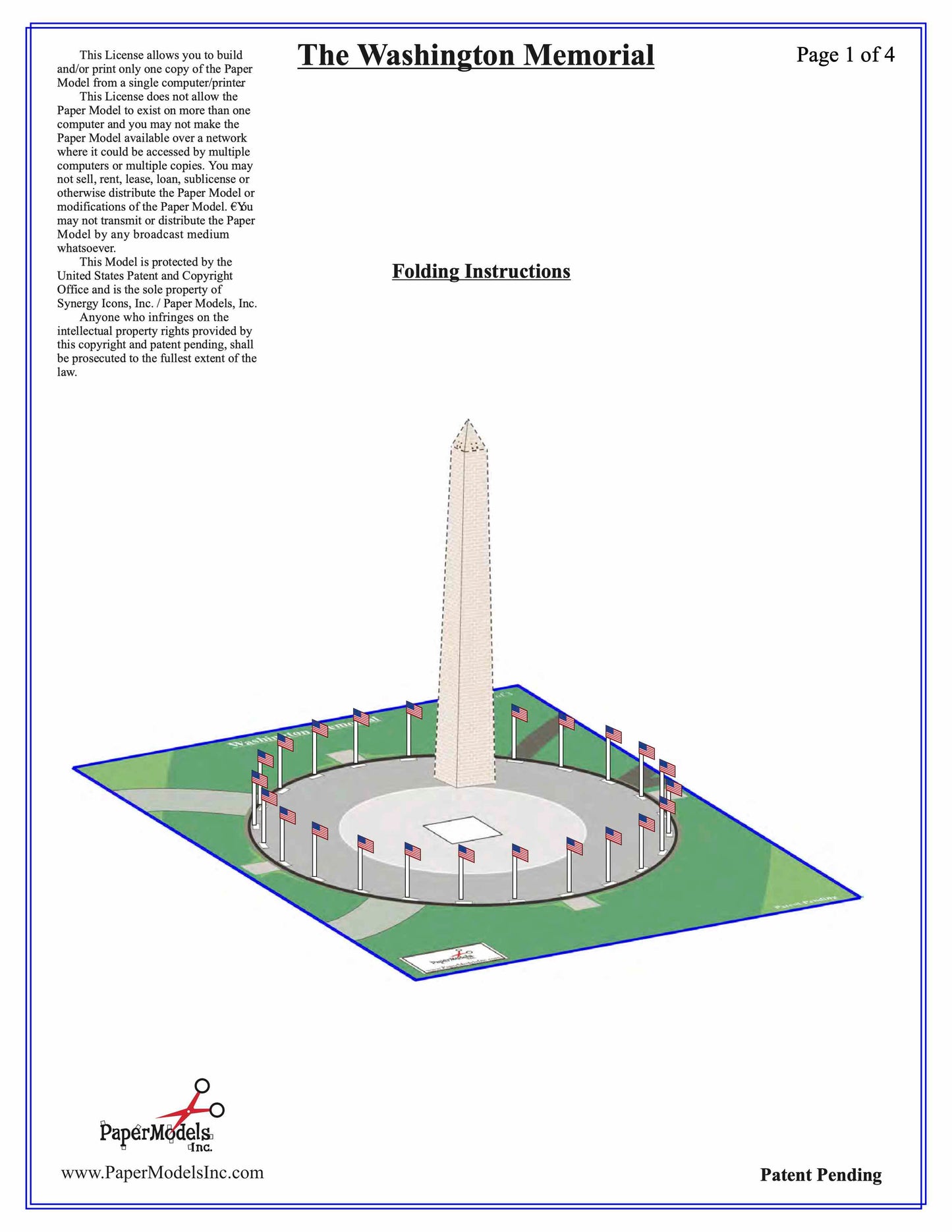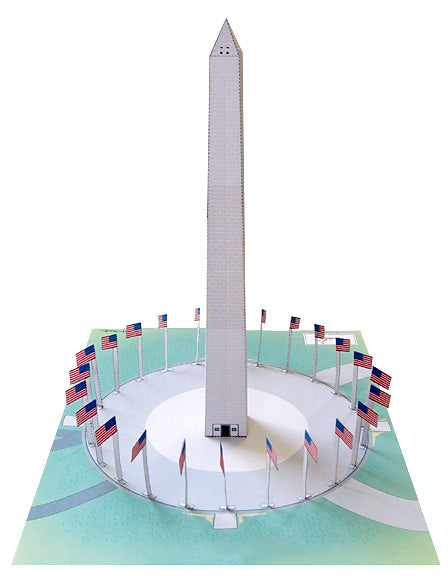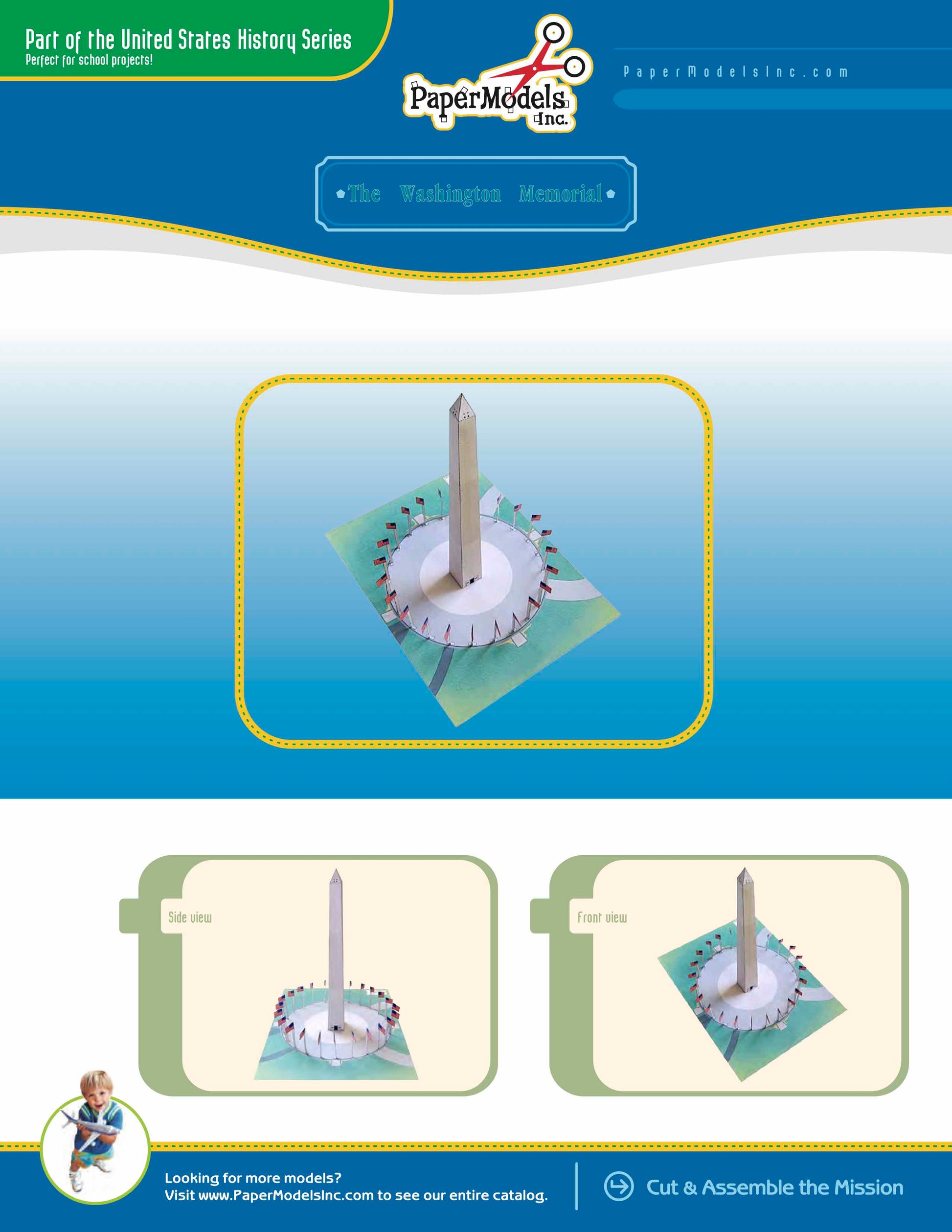Washington Monument, Washington - Paper Model Project Kit
Washington Monument, Washington - Paper Model Project Kit
Couldn't load pickup availability
🌟 Welcome to Paper Models Online – Your Shortcut to Academic Excellence! 🌟
Are you tired of stressing over last-minute school projects? Look no further! Paper Models Online is here to make your academic life a breeze.
🚀 Why Choose Us?
At Paper Models Online, we understand the pressure of looming deadlines and the desire for that coveted "A" grade. That's why we've crafted the perfect solution for you! Whether you're a student aiming for extra credit, a parent looking for quality time with your kids, or just someone in need of a break from the chaos, our paper models are your ticket to success!
💻 Instant PDF Download OR Pre-Printed & Shipped
You're in control! Choose from our instant PDF download, starting at just $9.95 for the 7"x10" size or $11.95 for the 10"x13" size.
Print it on your home or office printer using regular paper, or opt for the hassle-free pre-printed option. We'll ship it directly to your doorstep for a flat $5 fee via USPS First-Class Parcel, ensuring you get it in 1-3 days!
✂️ Easy Assembly, Maximum Impact
With just a pair of scissors, some glue, and an hour of your time, you can turn these paper sheets into stunning three-dimensional architectural replicas or complete science projects. The images on our website are real models made from our kits, and we even provide a history to help you craft an impressive report.
🎨 Unleash Your Creativity
Not into mission kits? No worries! Our models double as templates for your creative genius. Paint, trace, adjust sizes—your imagination is the only limit! Create a custom masterpiece that reflects your unique style and personality.
🛒 The Buying Process Made Simple
- Choose Your Size: 7"x10" or 10"x13"
- Choose Your Delivery: Instant PDF download or pre-printed and shipped
- Purchase Your Model: It's that easy!

📦 Typical Kit Sample
Each kit includes 8 to 18 pages, providing everything you need to bring the model to life. An "exploded view" guides you through assembly, and a complimentary history adds that extra touch for your report. Impress your teacher not just with creativity but also with your research skills!
Don't let deadlines stress you out. Choose Paper Models Online for your next school project, and let us be Your Best Way To Get An "A"! 🌟
 |
 |
 |
| Exploded View | Sample Pieces | Finished Model |
Free History For Your Report
Washington Monument
The Washington Monument, located in Washington, D.C., is a world-class masonry monument dedicated to the life and legacy of George Washington, our first President of the United States. It is constructed at the west end of D.C.’s National Mall, an important collection of museums, statues, and landmarks. Standing at 555 feet and 5 1⁄2 inches, it is the tallest building in The District of Columbia, and is beautifully set at the far-end of the glimmering Reflecting Pool, also a part of the National Mall.
George Washington himself was among the Founding Fathers of The United States, and was chiefly the individual responsible for leading the command of The Continental Army, ultimately winning independence from Great Britain. Shortly thereafter, he was appointed President of The Constitutional Convention, a meeting of important men of the Revolution to help charter out a new system of government. Deservingly, he was the only president in history to be elected unanimously to the newly-created presidential office.
Washington served two terms as President of The United States, but then stepped down, refusing to run for a third term. This action is what helped to create the tradition that an American President, no matter how popular, may only serve for two terms. He was, however, offered to be made the King of The United States by the citizens. Of course, while this was a great honor, a monarchy-rule was what he and the Founding Fathers had fled from in Britain, and Washington, in true display of character and integrity, refused the offer. He instead chose to let the new democracy stay in place in accordance to the new government that The Constitutional Convention, and later the U.S. Constitution, created.
After serving his terms, Washington retired in 1797 to his home in Mount Vernon. Two years later he passed away. Mourned by grief, politicians and friends of Washington insisted that a memorial be constructed in his honor. The plans had included a tomb, but the length of time of discussions, costs, and the desire to give the former president a permanent resting place now, not later, all contributed to this plan being abandoned. Much later, in 1833 (Washington’s 100th Birthday), plans were made again for a memorial, this one being a cylinder structure that reached upwards to the sky.
In 1836, a competition was held for designs for the new monument. The winner was architect Robert Mills, who had submitted plans for a 600-foot, four-sided structure of marble and granite. The top of the column was to be a statue of Washington, and inside was to be statues of over thirty important historical figures. By 1848, over $87,000 in donations had been collected. Even though this was not enough to finish the project, Congress believed it was enough to begin building, and then generate more donations as people’s interests grew. The location was then chosen because of its local beauty, including stunning views of the Potomac.
A ceremony for the laying of the cornerstone was commenced on July 4th, 1848, and was hosted by the Freemasons, an organization of which Washington was a member. Donations ran dry a short time later, in 1854. Congress voted to approve the rest of the money needed for building, but retracted their offer when they learned that each state was willing to donate granite and stones from their own fields for the monument, allowing all citizens to feel apart of this memorial. This only caused further problems, because stones began coming in from all parts of the world, inscribed with mottos or slogans that had nothing to do with President Washington.
This included religious messages from the Templars of Honor and Temperance, and even a block from Pope Pious IX. A new group, known as The Know-Nothings, took over control of the Monument’s society, and continued work with masonry stones that were of extremely low quality and later had to be removed. In 1876, Congress appointed funds to finally complete the monument, but conflicts in the monument’s final design created tensions and held the work from continuing for another three years. Finally, work resumed in 1879, under supervision of the U.S. Army Corps of Engineers. It was completed in four years, with a 100-ounce aluminum capstone placed on top on December 6th, 1884. The interior was then completed, and the Monument opened to the public on October 9th, 1888.
© Copyright – Paper Models, Inc. – All Rights Reserved
Share








